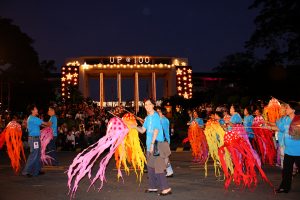UP Naming Mahal
The UP hymn is actually a translation of the original “UP Beloved,” from the poem of Teogenes Velez. “UP Beloved” is a product of two University contests in 1917 about the UP Spirit—one for poetry, and the other for music. Nicanor Abelardo composed the winning music to which the poem was set. In 1969, a contest to translate “UP Beloved” to Filipino was put in place, but no single translation emerged to be the winner. Instead, the translation came out as a composite of seven entries from Carlito Barril, Conrado Galang, C.P. Habito, Bienvenido T. Miranda, Jose L. Pelayo, Hilarion R. Rubio and Severino S. Tabios.
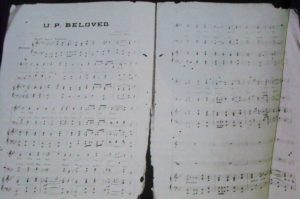
UP Diliman Month
The Diliman Month started in February 1999. Proclaimed by UPD Chancellor Claro T. Llaguno in compliance with Presidential Proclamation 683, declaring February as National Arts Month, this celebration superseded the Diliman Week that began in February 1995, an initiative of Chancellor Roger Posadas. The month-long celebration showcases UPD’s wealth of research and creative works and recognizes the outstanding accomplishments of its constituents. Part of the Diliman Month is the “Linggo ng Parangal,” the week-long recognition of outstanding UP faculty, personnel and students.
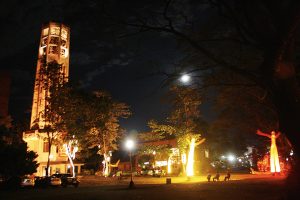
UP Fair
A 5-day musical fest held at the Sunken Garden every February, the UP Fair is considered the biggest student-initiated activity in UP Diliman. Organized by the UP Diliman University Student Council (USC), the Fair features many of the biggest bands of the country and attracts a crowd of up to 10,000 per night. The UP Fair is not only a week-long revelry, but also a USC fundraising activity for the organization’s various beneficiaries like the UP dormitories and the UP varsity.

Cadena de Amor
The Cadena de Amor that started in 1934 was a rite based on the Daisy Chain of Vassar College, where the responsibilities of Senior coeds were symbolically turned over to the Juniors, through the passing of long garlands of cadena de amor. Usually set in mid-May, Cadena de Amor had three muses (Filipinas, Alma Mater and Lakambini, formerly Maria Clara) chosen among the Seniors for their academic ratings, personality, leadership and intelligence. The turnover ceremony is comprised of the four phases of verdant leaves (processional), petals (acceptance by the juniors of the responsibilities), loops and links (passing of the cadena de amor by graduates to the new seniors) and vines (speeches by juniors and senior students and one by the outgoing president of the UP Women’s Club). Each UP lady in attendance recites the Cadena de Amor poem written by Trinidad T. Subido, sings the Awit ni Maria Clara song, and passes the cadena de amor garland while singing Auld Lang Syne. The rise of student activism saw the end of the “festivals of girls and flowers.” The last Cadena de Amor was held in 1968.
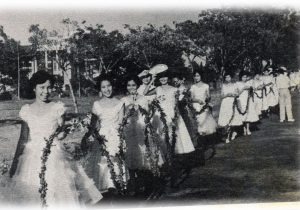
UP General Education Program
The General Education (GE) program is a legacy of President Vicente G. Sinco that the University Council approved on June 21, 1958. Sinco had in mind a curriculum that would develop the student’s ability to effectively speak and write English and read and understand materials with complexity to have the ability to think critically, to understand the present status and past history of the culture and society of which the student is a part, and to grasp the nature of science as an intellectual process. A new GE Program came after February 1986, aimed among others, to “infuse a passion for learning with a high sense of moral and intellectual integrity.” The GE program is the hallmark of any UP student’s education.
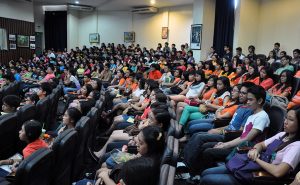
UP Activism
UP is known for its long-tradition of activism. The first student protest march happened on July 17, 1918. Led by Carlos P. Romulo and Jose Romero, the students objected to the unwarranted press attack on President Ignacio Villamor made by Manila Times on its editorial written by Manuel Xeres Burgos.
The most celebrated student protest was the Diliman Commune in February 1971. UP Diliman constituents held a barricade inside the campus for nine days, declaring a “Republic of Diliman,” while highlighting pressing issues like human rights, academic freedom and freedom of speech and expression. Twenty-five years later, on February 1, 1996, a commemorative marker was set at the UP Gates along University Avenue, about 20 meters from where the barricade was set. The unveiling was led by erstwhile student activist now physics professor and former UP Diliman Chancellor Roger Posadas.
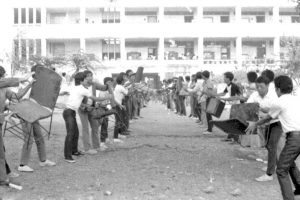
UPCAT
Any Isko would remember the long lines to an UPCAT (UP College Admission Test) application, the passport to a UP education. Held for two days during the first week of August, the UPCAT was instituted in 1973 as the entrance examination required of all applicants for admission to UP.
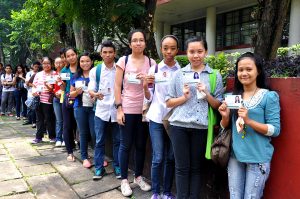
UP Hayride
The UP Hayride coincided with the University’s celebration of Loyalty-Arbor Day. The first documented Hayride was on September 21, 1962. Everyone could hitch a ride from open vehicles cushioned with hay. This was the time when the usual somber evening on campus would turn into a night of revelry, where everybody donned the most casual of attires and were licensed to be in touch with their wild side. A favorite Hayride activity was the torch marathon. Contestants would run around the campus carrying lighted torches, and vie for the honor of lighting first the bonfire at the Union open court. The UP Hayride ended in 1969.

Pag-iilaw
The annual switching on of Christmas lights at the Quezon Hall and illumination of the University Avenue, the Pag-iilaw marks the start of Yuletide observation in UP Diliman.
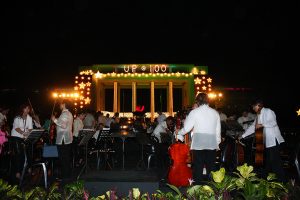
UP Lantern Parade
The UP Lantern Parade can trace its tradition to the carrying of lanterns of various shapes and sizes to light the way to the early morning mass or misa de gallo, but had its first celebration in 1922. President Jorge C. Bocobo established the practice of Lantern Parade in 1934 as what it is now, so that “students can have a frolicsome activity before the year ends.”
